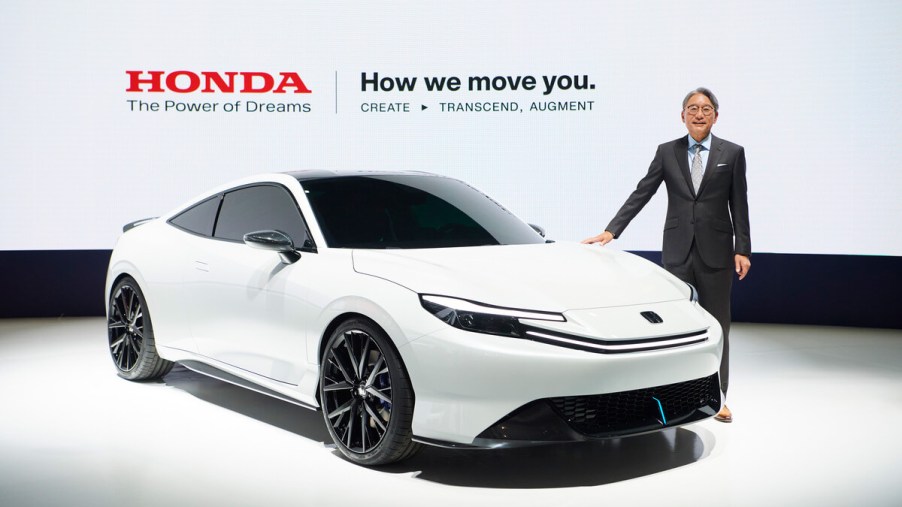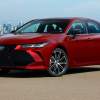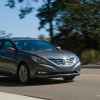
1 Honda Sports Car Is Worthy of a Comeback
When people think of iconic sports cars, names from the Big Three automakers—Ford, Chevrolet, and Dodge—often take the spotlight. These companies made cars like the Mustang, Camaro, and Charger, high-performance machines that are household names. However, one shouldn’t overlook the Honda Prelude, a vehicle that has achieved legendary status.
Like its American counterparts, the Honda sports car has etched its place in automotive history, though perhaps not as loudly. For this reason, it has made an indelible mark on pop culture globally over the decades. Primary examples include cameos in movies like Fast and Furious and video games like Gran Turismo. The Prelude has long been a favorite among racers, hobbyists, and pros due to the availability of aftermarket parts and affordability. That said, it’s one Honda sports car worthy of a comeback.
A brief history of the Honda Prelude
Honda introduced the Prelude in Japan on November 24, 1978, making its global debut at the 1979 AutoRAI in Amsterdam. This two-door coupe is based on the Honda Accord and has a standard moonroof.
Interestingly, Toyota had trademarked the name before Honda but relinquished it, allowing the Prelude to become the newest member of the car manufacturer’s music-themed lineup alongside models like the Jazz and Accord.
As pointed out by J.D. Power, the Prelude underwent several engine upgrades across its five generations, ranging from 72 to 200 horsepower. It was one of the first cars under two liters to offer standard power steering.
The Prelude’s design by Hiroshi Kizawa was inspired by Honda’s earlier sports cars, with a long hood, larger engine, and short trunk. Its design, in essence, resembled the Toyota Celica, the Prelude’s chief competitor.
Over the years, the Prelude faced fierce competition from the Celica and other coupes, such as the Nissan Silvia and Isuzu Impulse. Even though the car received excellent reviews for its design and handling from MotorTrend and Kelley Blue Book, it didn’t sell better than the Celica.
The Prelude had a reasonable performance in safety tests but didn’t secure top ratings from the Insurance Institute for Highway Safety.
Production of the Prelude ended in 2001 upon the debut of the fourth-generation Integra. Despite its discontinuation, the Prelude remains a significant chapter in automotive history.
Honda Prelude generations worth noting
In 1983, showrooms in the United States began receiving the Prelude, already in its second generation. The new Prelude maintained its long hood and short deck lid but featured a sleeker, more angular design.
Honda also improved the suspension for a better ride by adding a front double wishbone and a rear independent MacPherson strut. According to MotorTrend, it initially ran on a 1.8-liter engine with 100 hp, but the 1986-1987 2.0 Si models boasted a more potent 2.0-liter engine, offering 110 hp and 114 lb-ft of torque. The significant performance improvement resulted in a zero-to-60 mph time of around 9 seconds.
Building on the success of its predecessors, the third-generation Prelude showcased groundbreaking features when it debuted in 1987. Honda designed it with an impressive 0.34 drag coefficient and high-strength metal roof pillars for added rollover safety.
The car further distinguished itself with the world’s first mechanical four-wheel steering system built into a mass-produced passenger vehicle, a feature later integrated into the Honda Ascot 2.0FBT-i sedan. This intricate steering mechanism utilized two steering boxes connected by a dedicated shaft.
Despite its complex design, the system made lane changes at highway speeds almost effortless and greatly aided in low-speed maneuvers like parallel parking.
As the fourth generation saw sales decline, Honda’s engineers sought to reinvigorate the model by reverting to the third generation’s squarish body style. Debuting in November 1996, the fifth-generation Prelude introduced the Active Torque Transfer System (ATTS).
Introduced to the North American market as the SH (Super Handling) trim, ATTS automatically funneled more power to the outside front wheel during turns, counteracting the car’s natural front-wheel drive understeer. However, the system struggled to fully compensate for the Prelude’s 63.1% front weight distribution.
Is Honda bringing back the Prelude?
Recent legal moves indicate a potential resurgence for this once-celebrated model. According to the news and commentary site Electrek, Honda recently filed a trademark application suggesting it may reintroduce the Prelude as an electric vehicle.
Considering the automaker’s pledge to roll out 30 EV models globally by 2030, this could align with its 75th-anniversary plans for a new electric sports car. If true, fans of the Prelude have something to daydream about.


